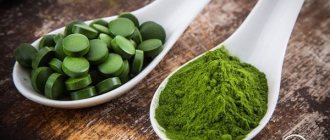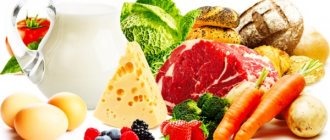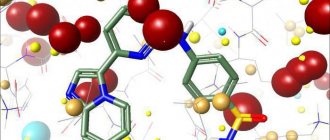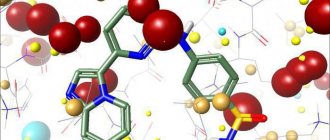What happens from a lack of protein in the human body?
An adult man needs 55 g of protein food per day. The recommended norm for women is 45 g. With active sports, the need increases. If the body regularly experiences protein deficiency, serious disruptions in the functioning of internal organs and systems begin.
Among them:
- anemia;
- decreased immunity;
- apathy;
- slowing down of thinking functions;
- loss of muscle mass;
- deterioration in the quality of skin, hair, nails.
With a lack of protein, a person feels constant fatigue and dizziness, and suffers from insomnia. Hormonal levels are disrupted, which causes nervous system disorders - irritability, aggression.
How can you replace animal protein, and where is the best place to get it for a vegetarian?
Refusal to eat meat, fish and dairy products is not at all associated with deterioration in health. Many grains, beans and vegetables are rich in proteins.
Nutritionists offer the TOP 12 best sources of plant protein for vegetarians:
- Tofu
- Lentils
- Greek yogurt
- Eggs
- Nuts and seeds
- Brown rice
- Beans
- Cashew
- Tempe
- Quinoa
- Buckwheat
- Broccoli
Tofu
Bean curd is a universal protein diet for vegetarians. It's suitable for everything from casseroles to dessert cocktails. It enriches the body not only with protein, but also with calcium, which is necessary for strengthening bones. Tofu satisfies hunger well and helps keep you feeling full for a long time.
Lentils
Protein is especially important for vegetarian athletes, since physical activity requires more energy. Lentils provide the human body with a large amount of protein and 9 essential amino acids. The grains of this legume are also rich in other elements that are difficult to obtain without meat - iron, copper, B vitamins. Lentil soups and porridges are recommended to be consumed when gaining muscle mass.
Greek yogurt
Many vegetarians accept the consumption of dairy products. The healthiest of them is Greek yogurt, which is highly nutritious and thick. It is an excellent source of easily digestible protein and Omega-3 fatty acids, essential for heart health.
Eggs
Non-strict vegetarians are allowed to eat eggs. An inexpensive and low-calorie product can complement the menu 2-3 times a week. In addition to pure protein, eggs supply the body with calcium and vitamin D.
Nuts and seeds
This is a filling and healthy snack, as well as a good addition to vegetarian salads and vegetable stews. Nuts and seeds contain from 2 to 5 g of protein for every 100 g. Pumpkin seeds, Brazil nuts and almonds are the healthiest for a vegetarian diet - in addition to a significant amount of protein, they contain polyunsaturated fatty acids.
Brown rice
The grains of this cereal are not polished, therefore they retain the plant germ and shell. Due to this, the protein content is higher than in white rice. Brown rice contains substances that are difficult to obtain from food without eating meat - vitamins B, K, calcium and iron. By using grain in their diet, vegetarians eliminate the risk of developing anemia and chronic fatigue.
Seafood

Seaweed Salad
Seafood includes everything edible obtained from the world's oceans. However, the most “vegetarian” seafood is seaweed, which contains large amounts of vitamins, minerals and easily digestible proteins. Iodine, phosphorus, iron, magnesium, potassium, bromine, sodium - this is only a partial list of the beneficial substances they contain. The qualitative and quantitative content of macro- and microelements in seaweed resembles the composition of human blood, which also allows us to consider them as a balanced source of saturating the body with minerals and microelements.
Algae are classified as brown, red and green.
- Brown algae include wakame, limu, hijiki and kelp (seaweed), including its varieties (arame, kombu, etc.);
- Red algae are called dals, carrageenan, rhodium and porphyra (which, thanks to the Japanese, is known throughout the world as nori);
- Green algae include monostroma (aonori), spirulina, umi budo (sea grapes) and ulva (sea lettuce).
In general, if you see these names on the packaging, this is a completely vegetarian food.
How can you replace animal protein, and where is the best place to get it for a vegan?
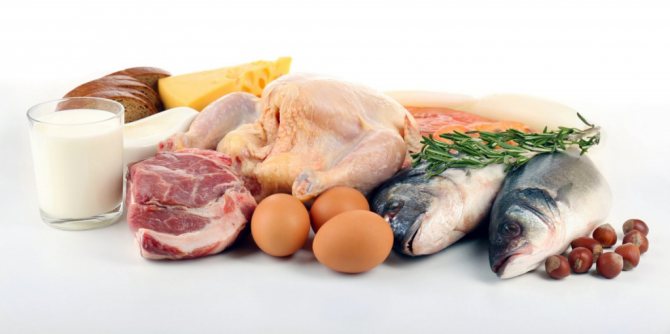
Adherents of the vegan philosophy reject the use of any food of animal origin. Products obtained through the exploitation of living beings are also excluded - eggs, milk, caviar and honey. But the vegan list of protein-rich foods includes quite a few items, from soy dishes to vegetables.
Beans
Thanks to its high protein content, it makes any dish satisfying. Bean fiber improves digestion and lowers cholesterol levels. The product is universal for cooking - soups, stews, and baked goods are prepared from it. Any variety will be useful in a vegan diet - white, red, yellow, but black beans are especially high in protein.
Cashew
The tasty nut is rich in vegetable protein and unsaturated fatty acids - Omega-3, Omega-6, Omega-9. Vegan cashew butter is a healthy alternative to butter and cheese for sandwiches. Nuts can be added to cereals, salads, and desserts. For vegan athletes, they serve as a convenient snack between workouts.
Tempe
This soy product has a texture similar to tofu, but has twice the protein. In addition, tempeh contains bacteria that are beneficial to the digestive tract. The product is rich in substances that actively remove toxins from the body. Tempeh can be fried in vegetable oil, baked with vegetables, or used as an addition to salads and vegan pasta.
Quinoa
South American cereal grains consist of 20% protein. In this regard, the product is superior to all grain crops, including rice and buckwheat. Vegetable protein quinoa is classified as “complete”, that is, containing 21 amino acids at once. Healthy cereals find many uses in a vegan menu - porridges, vegetable cutlets, soups.
Buckwheat
In terms of protein content, it is second only to “overseas” cereals - quinoa and amaranth. Buckwheat supplies the body with iron, B vitamins and rutin, necessary for vascular health. Buckwheat plant fibers perfectly cleanse the intestines of toxins.
Broccoli
The green vegetable contains a lot of protein, equal in value to the protein of a chicken egg. It contains the amino acids lysine and isoleucine, which are important for supporting the immune system and energy tone of the body. Thanks to its abundance of B vitamins, broccoli supports the health of the nervous system, hair and skin.
Dairy
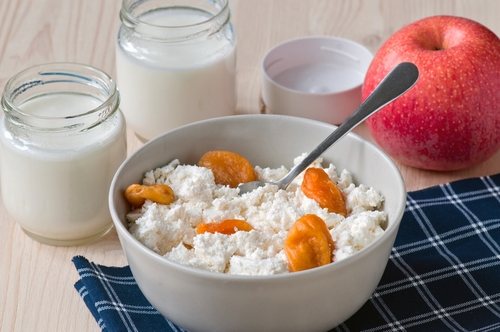
They include milk itself and food products made from it. This includes cheeses, sour cream, cottage cheese, yoghurts, cream and products made from them, including butter and ice cream, as well as dairy and fermented milk drinks. Some of these products are high-calorie and contain large amounts of milk fat, while others are low-calorie, such as kefir. Various types of low-fat milk are also produced. The naturalness of milk currently produced is, of course, highly controversial, but low-calorie content, if indicated on the packaging, is not. Dairy products have, in addition to nutritional properties, other properties, for example:
- Kefir has a soothing cooling effect;
- Sour cream helps normalize the activity of the hormonal system, in winter (but not in summer), it has a warming effect on the body;
- Cottage cheese gives strength to the nervous system, cottage cheese = calcium is also a well-known point;
- Hard cheeses are good activators of muscle tissue; processed cheeses normalize the functioning of the mucous glands.
When choosing vegetarian dairy products, especially cheeses and yoghurts, you need to pay attention to the fact that their production may use rennet enzymes of animal origin - this is an extract from the stomachs of baby animals. It is better to look for products with plant-based enzymes. How to be here? Study the names of enzymes of animal and plant origin and carefully read what exactly is written on the packaging.
Summary table of vegetable protein in products and its quality
In order for the body to receive daily protein requirements, you need to use several plant sources daily.
Vegetables, nuts and beans go well together. Soy products can be combined with cereals, pastas and vegetables. With legumes, they are less easily absorbed by the body. The table shows products from the TOP 12 sources of vegetable protein.
| Product | Protein volume (in grams per 100 g) |
| Tofu | 12 |
| Lentils | 9 |
| Greek yogurt | 5 |
| Chicken eggs | 7 |
| Nuts and seeds | 3-5 |
| Brown rice | 7,5 |
| Beans | 7 |
| Cashew | 3 |
| Tempe | 20 |
| Quinoa | 16 |
| Buckwheat | 13 |
| Broccoli | 3 |
When creating a vegetarian and vegan diet, it is important to calculate not only the quantity, but also the quality of protein. It depends on the digestibility and content of essential amino acids - substances that are not produced in the body. The quality of plant proteins is always lower than animal proteins, since vegetables, beans and grains contain fewer amino acids.
The richest amino acid composition of animal products is eggs and yogurt. Tofu, tempeh, buckwheat and quinoa also have high protein quality.
Criticism of the nitrogen balance method
In 2010, a group of researchers from the Hospital for Sick Children in Toronto released a paper suggesting that the recommended dietary allowance (RDA) (which includes the RDA) underestimates human protein needs (5). One of the authors, Dr. Paul B. Pencharz, was a member of the panel responsible for calculating the RDA for macronutrients and was one of the experts involved in the joint report on protein and amino acid requirements of the World Health Organization, the Food and Agriculture Organization of the United Nations and the University united nations. The study noted the following:
These protein intake recommendations for adults are based on a reanalysis of existing studies using the nitrogen balance method (1,12). The nitrogen balance method has certain methodological limitations, and therefore its use leads to an underestimation of protein requirements. Additionally, using linear regression analysis alone to determine nitrogen balance is inappropriate because the relationship between nitrogen intake and body nitrogen levels is nonlinear. Based on this, we reanalyzed published studies that used the nitrogen balance method using two-time regression. The results showed that the average protein requirement was 0.91 g/kg/day and the intake level that met the requirement of the majority of the population was 1 g/kg/day. Using the AIO (indicator of amino acid oxidation) method, we determined these values to be 0.93 and 1.2 g/kg/day, respectively. These figures exceed existing government recommendations by 40%. This large difference suggests an urgent need to re-evaluate official protein recommendations for adults.
These scientists also explain that the methodological limitations of the nitrogen balance method are that it overestimates nitrogen intake and underestimates its loss. This leads to an incorrect nitrogen balance with lower protein intake.
The AIA (amino acid oxidation indicator) method mentioned above is explained below:
The IOA method is based on the concept that when one essential amino acid is lacking in the diet, all other amino acids are oxidized, including the amino acid that is considered an indicator (one of the essential amino acids, usually L-[1-13C]phenylalanine)(5). As the consumption of the missing amino acid (or total protein) increases, the oxidation of the indicator amino acid decreases, reflecting the inclusion of this amino acid in the digestible protein. As soon as the level of protein consumed reaches the optimal level, the oxidation of the indicator amino acid ceases to change.
In other words, this group of researchers believes that the average protein requirement is 0.91-0.93 g/kg/day, and the intake level that meets the needs of 97-98% of the population (the same as the RDA) is 1. 0-1.2 g/kg/day.
Given these findings, vegans may be best advised to consume more protein.

